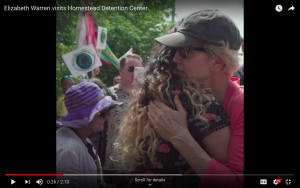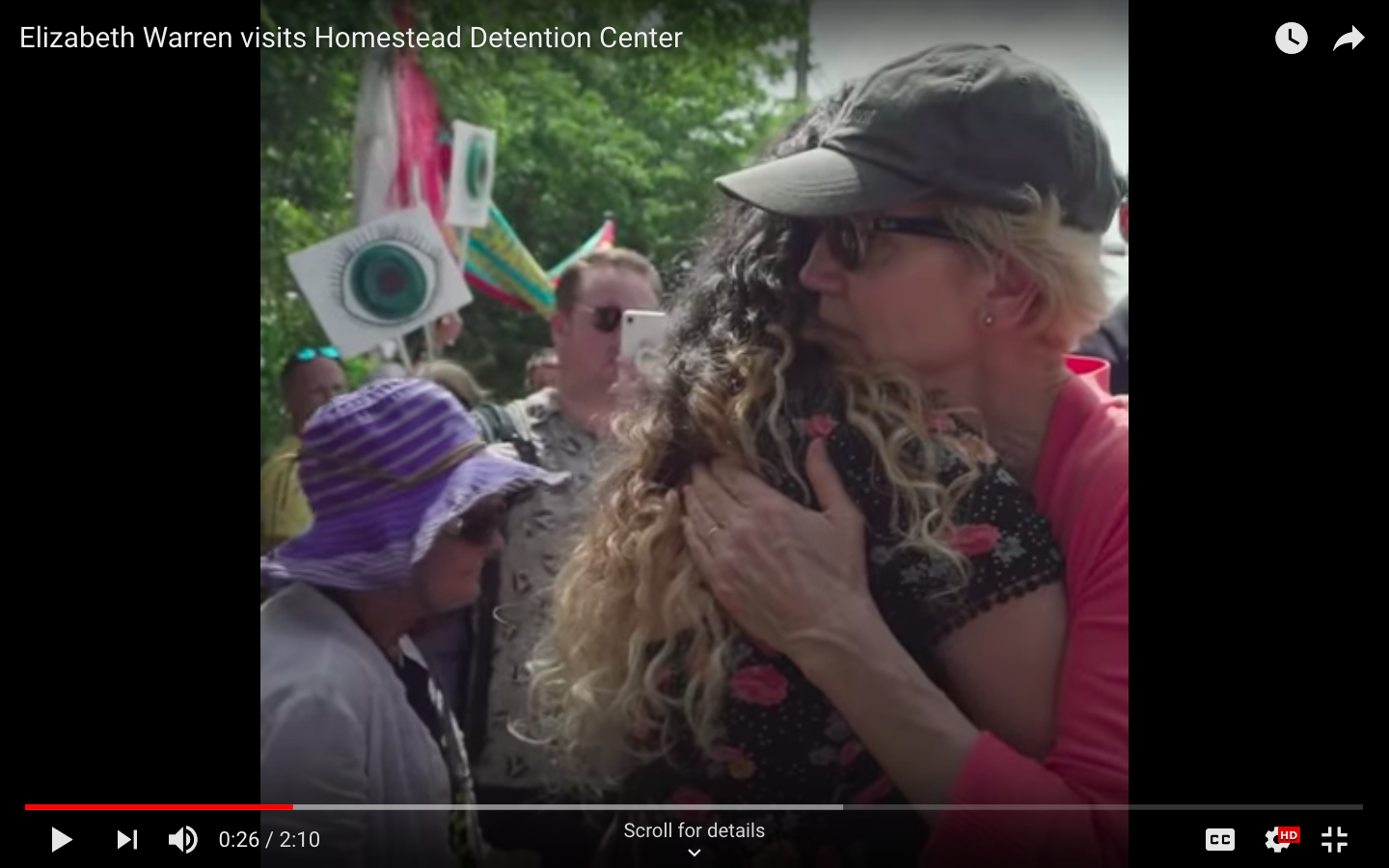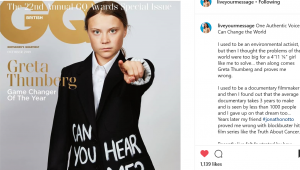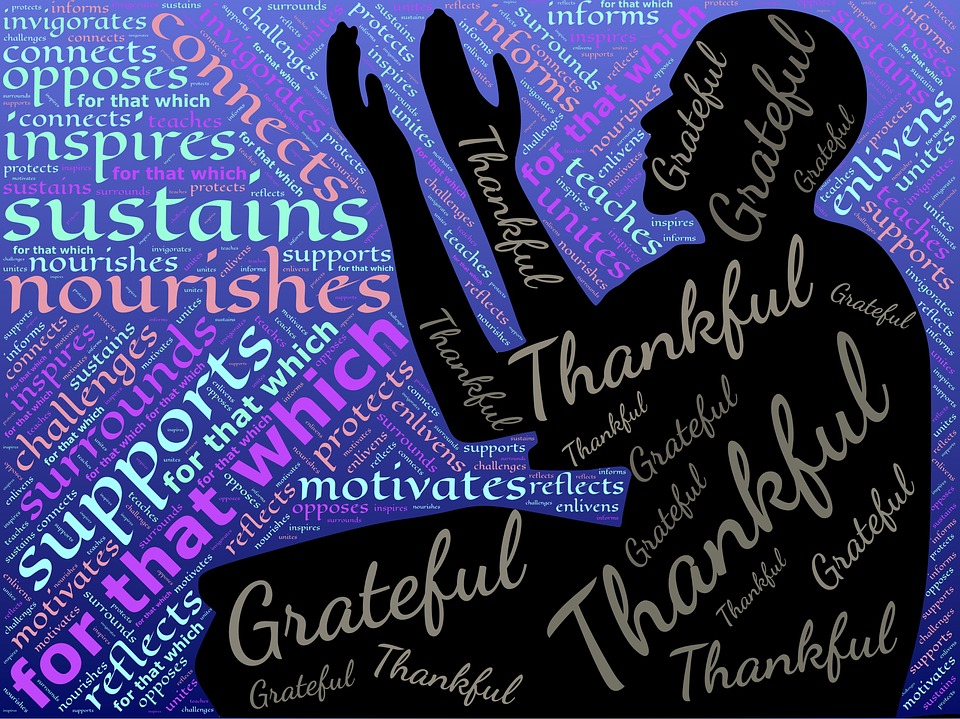Best. Candidate Withdrawal. Ever
Regardless of what you think of her politics, her personality, or anything else, you have to admit she is quite a wordsmith. Personally, I thought Elizabeth Warren was the best presidential candidate I’ve ever had the chance to vote for. But after her dismal Super Tuesday, it was clearly time for her to get out. She used the opportunity to be memorable once again, and to remind us that it was never about her, but about the movement.

Warren’s amazing pep talk of a withdrawal statement was one of the most remarkable pieces of oratory-in-writing (and, I’m guessing, oratory delivered in person to our campaign staff) I’ve ever seen. Since many readers of this blog are professional communicators, it’s worth analyzing and learning from it. Here it is, with my commentary:
I want to start with the news. I want all of you to hear it first, and I want you to hear it straight from me: today, I’m suspending our campaign for president.
No shilly-shallying, no evasion. Straight to the unpleasant truth.
I know how hard all of you have worked. I know how you disrupted your lives to be part of this. I know you have families and loved ones you could have spent more time with. You missed them and they missed you. And I know you have sacrificed to be here.
Acknowledging how her volunteers and staff have put their lives on hold. Few candidates do this. More should.
So from the bottom of my heart, thank you, for everything you have poured into this campaign.
Not just acknowledging, but giving direct thanks.
I know that when we set out, this was not the call you ever wanted to hear. It is not the call I ever wanted to make. But I refuse to let disappointment blind me – or you – to what we’ve accomplished. We didn’t reach our goal, but what we have done together – what you have done – has made a lasting difference. It’s not the scale of the difference we wanted to make, but it matters – and the changes will have ripples for years to come.
Rooting the disappointment in optimism and accomplishment.
What we have done – and the ideas we have launched into the world, the way we have fought this fight, the relationships we have built – will carry through, carry through for the rest of this election, and the one after that, and the one after that.
Going for the long-term view.
So think about it:
We have shown that it is possible to build a grassroots movement that is accountable to supporters and activists and not to wealthy donors – and to do it fast enough for a first-time candidate to build a viable campaign. Never again can anyone say that the only way that a newcomer can get a chance to be a plausible candidate is to take money from corporate executives and billionaires. That’s done.
Look how she frames this: as a forever improvement to a broken system. Wonderfully bold.
We have also shown that it is possible to inspire people with big ideas, possible to call out what’s wrong and to lay out a path to make this country live up to its promise.
We have also shown that race and justice – economic justice, social justice, environmental justice, criminal justice – are not an afterthought, but are at the heart everything that we do.
And at the heart of this message. This was a campaign based from the start in social justice.
We have shown that a woman can stand up, hold her ground, and stay true to herself – no matter what.
Something we needed a certain amount of assurance about, after the debacle of 2016.
We have shown that we can build plans in collaboration with the people who are most affected. You know just one example: our disability plan is a model for our country, and, even more importantly, the way we relied on the disability communities to help us get it right will be a more important model.
This collaborative approach is rare in political campaigns, especially at the presidential level. Acknowledging the contributions of experts who don’t merely study but actually LIVE the experience in formulating policy.
And one thing more: campaigns take on a life and soul of their own and they are a reflection of the people who work on them.
This campaign became something special, and it wasn’t because of me. It was because of you. I am so proud of how you all fought this fight alongside me: you fought it with empathy and kindness and generosity – and of course, with enormous passion and grit.
Fairly typical kudos to the staff and volunteers. Nicely done, but other candidates have done the same.
Some of you may remember that long before I got into electoral politics, I was asked if I would accept a Consumer Financial Protection Bureau that was weak and toothless. And I replied that my first choice was a consumer agency that could get real stuff done, and my second choice was no agency and lots of blood and teeth left on the floor. And in this campaign, we have been willing to fight, and, when necessary, we left plenty of blood and teeth on the floor. And I can think of one billionaire who has been denied the chance to buy this election.
Back to the long-haul strategy, the idea that this is a fight that takes time, and that there are victories along the way, from years past to even as recently as this week
Now, campaigns change people. And I know that you will carry the experiences you have had here, the skills you’ve learned, the friendships you have made, will be with you for the rest of your lives. I also want you to know that you have changed me, and I will carry you in my heart for the rest of my life.
Doesn’t she sound like she’s giving a graduation speech? She’s reminding them of the inspiring, even life-changing experience they all had together in support of this larger cause: building a movement.
So if you leave with only one thing you leave with, it must be this: choose to fight only righteous fights, because then when things get tough – and they will – you will know that there is only option ahead of you: nevertheless, you must persist.
A lot going on in these three lines. A command to do what’s right, a reminder that you’ll face deep-seated opposition, and a call-back to the popular meme that sprung up around her after Mitch McConnell refused to let her read Coretta Scott King’s remarks on the Senate floor. McConnell was the one who said, “Nevertheless, she persisted,” and within days, that was on bumper stickers all around the country
You should all be so proud of what we’ve done together – what you have done over this past year.
We built a grassroots campaign that had some of the most ambitious organizing targets ever – and then we turned around and surpassed them.
Our staff and volunteers on the ground knocked on over 22m doors across the country.
They made 20m phone calls and they sent more than 42m texts to voters. That’s truly astonishing. It is.
We fundamentally changed the substance of this race.
Not just listing some of the accomplishments, but quantifying them. She’s reminding them that she is a policy wonk, that she uses data to substantiate her claims and justify her many detailed plans.
You know a year ago, people weren’t talking about a $0.02 wealth tax, universal childcare, cancelling student loan debt for 43 million Americans while reducing the racial wealth gap, or breaking up big tech. Or expanding Social Security. And now they are. And because we did the work of building broad support for all of those ideas across this country, these changes could actually be implemented by the next president.
Again, reminding them how they helped to change the discourse and make space for the next president to put these things into practice.
A year ago, people weren’t talking about corruption, and they still aren’t talking about it enough – but we’ve moved the needle, and a hunk of our anti-corruption plan is already embedded in a House bill that is ready to go when we get a Democratic Senate.
A subtle call to get that Democractic Senate majority, and a subtle reminder of the large pile of bills passed by the House but in limbo in the Senate.
We also advocated for fixing our rigged system in a way that will make it work better for everyone – regardless of your race, or gender, or religion, regardless of whether you’re straight or LGBTQ. And that wasn’t an afterthought, it was built into everything we did.
A universalist call for inclusion and intersectionality that manages to avoid insulting white working class straight Christian men, who are just as much “everyone” as those who identify as other than that.
And we did all of this without selling access for money. Together 1.25 million people gave more than $112m to support this campaign. And we did it without selling one minute of my time to the highest bidder. People said that would be impossible. But you did that.
Again, she is rewriting the expectation of what’s not only possible but can become normal.
And we also did it by having fun and by staying true to ourselves. We ran from the heart. We ran on our values. We ran on treating everyone with respect and dignity.
Social change can be fun! As Emma Goldman said, “If I can’t dance, I don’t want to be in your revolution.”
You know liberty green everything was key here – my personal favorites included the liberty green boas, liberty green sneakers, liberty green make up, liberty green hair, and liberty green glitter liberally applied. But it was so much more.
A bit of branding. In truth, I hadn’t noticed this. Warren’s signs have been blue-and-white for years (I live in Massachusetts and I’ve seen them since 2012).
Four-hour selfie lines and pinky promises with little girls.
In other words, what you staff and volunteers did helps to shape the next generation. A strong claim to deeper meaning.
And a wedding at one of our town halls. And we were joyful and positive through all of it.
Celebratory! And a talking point: what other candidate would inspire a wedding at a Town Hall, and what other candidate would make space for that to happen?
We ran a campaign not to put people down, but to lift them up –
Another message of empowerment, and a huge contrast with the incumbent.
and I loved pretty much every minute of it.
OK, so she’s probably exaggerating. But it is clear that she loved most of it. It’s obvious that she enjoys debating, meeting constituents and fans, showing up with media in tow even at a detention center for migrant children, doing funny TV appearances, chowing down regional food, showing off her policies, etc.
So take some time to be with your friends and family, to get some sleep, maybe to get that haircut you’ve been putting off – you know who I’m talking about.
Humor in the face of stress and disappointment, followed by…
Do things to take care of yourselves, gather up your energy, because I know you are coming back. I know you – and I know that you aren’t ready to leave this fight.
Another call to stay active and involved.
You know, I used to hate goodbyes. Whenever I taught my last class or when we moved to a new city, those final goodbyes used to wrench my heart. But then I realized that there is no goodbye for much of what we do. When I left one place, I took everything I’d learned before and all the good ideas that were tucked into my brain and all the good friends that were tucked in my heart, and I brought it all forward with me –
Reiterating that the fight goes on, and so do the policy wins and the friendships.
and it became part of what I did next. This campaign is no different. I may not be in the race for president in 2020, but this fight – our fight – is not over. And our place in this fight has not ended.
Because for every young person who is drowning in student debt, for every family struggling to pay the bills on two incomes, for every mom worried about paying for prescriptions or putting food on the table, this fight goes on. For every immigrant and African American and Muslim and Jewish person and Latinx and trans woman who sees the rise in attacks on people who look or sound or worship like them, this fight goes on.
Reiterating the intersectionality piece, the economic and social justice pieces, and the importance of defending the most vulnerable members of society.
And for every person alarmed by the speed with which climate change is bearing down upon us, this fight goes on. And for every American who desperately wants to see our nation healed and some decency and honor restored to our government, this fight goes on. And sure, the fight may take a new form, but I will be in that fight, and I want you in this fight with me. We will persist.
Bringing in the environment, which hadn’t shown up here so far. And again, reminding of how low the bar has fallen.
One last story. One last story. When I voted yesterday at the elementary school down the street, a mom came up to me. And she said she has two small children, and they have a nightly ritual. After the kids have brushed teeth and read books and gotten that last sip of water and done all the other bedtime routines, they do one last thing before the two little ones go to sleep. Mama leans over them and whispers, “Dream big.” And the children together reply, “Fight hard.”
A big, emotional close. Showing how the campaign’s motto is changing lives into the next generation. I would have ended it there but she has one more inspirational line:
Our work continues, the fight goes on and big dreams never die.





